Porsche turned its ugly duckling into the perfect sports sedan
Our Verdict.

So, what's the Panamera like to drive?
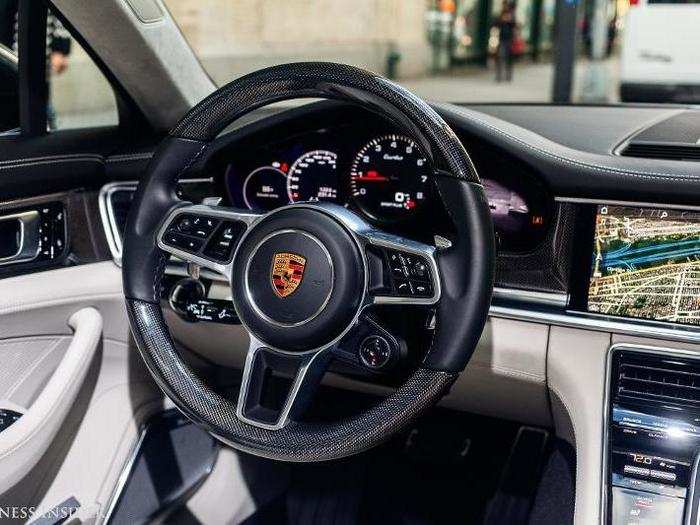
The new Porsche Panamera has a lot to live up to in terms of driving experience. While its predecessor wasn't always the best to look at, it offered up driving excellence every time.
For me, the new Panamera delivers. The raging brute of a V8 under the hood and PDK gearbox team up to provide effortless power on demand with no turbo lag to speak of. On the highway on-ramp, 60 mph happens in the blink of an eye and the speedometer will easily glide its way into the triple figures if you don't pay close attention to your right foot.
In the corners, the big Porsche sedan feels solid, as if it were hewn from a single block of iron. The chassis feels tight and the car feels composed at all times. Only under extreme acceleration does the rear end feel a bit nervy as it hunts for traction. In most daily driving conditions, the Panamera feels like it's riding on rails.
With that said, my colleague Matt DeBord, who liked the Panamera, felt that the sedan didn't quite drive like the four-door 911 he was expecting. He opined that you couldn't drive the Panamera in the same way that you could drive the brand's iconic sports cars.
Shut the rear hatch and you'll see the Panamera's new rear fascia including its nifty IKEA-esque expandable folding spoiler.
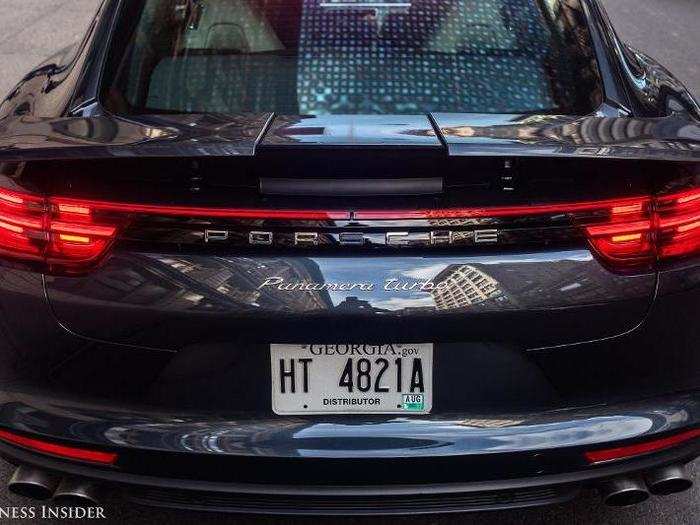
Outback, the Panamera's rear hatch opens to expose 17.6 cubic feet of cargo room. With the rear seat folded down, that number increases to 52.6 cubic feet of capacity.
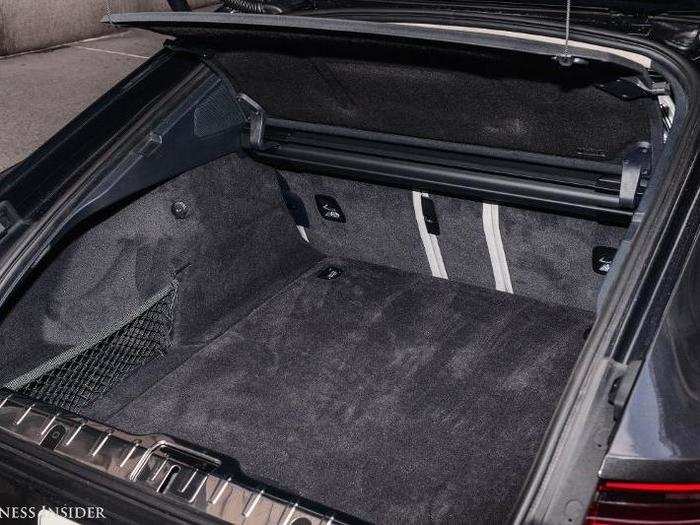
Speaking of the rear seats, they are remarkably comfortable. Due to the center console, there is only room for two, but those two passengers travel in style and comfort. Incredibly, the raked rear roofline offers sufficient legroom for most people not playing in the NBA.

There is also a duplicate set of touch screens and touch panels for the rear seat.
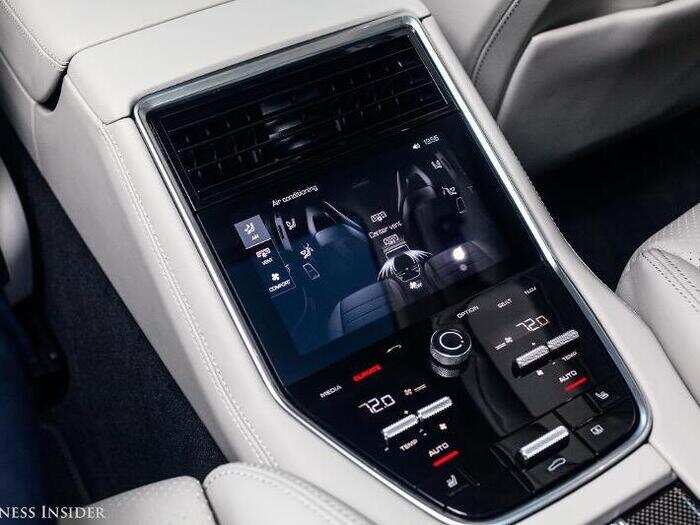
Another portion of the Porsche Advanced Cockpit is a touch panel center console. In a major departure from the first-gen Panamera's festival of buttons, the second gen's center console is virtually devoid of switchgear. Unlike previous applications of touch panels by other car makers, Porsche has managed to make this work. The controls are intuitively laid out and precise enough under most driving conditions.

Overall, the Panamera's new infotainment system is a success. It's quick, responsive, and packed with features. However, the system is complicated to use. It's an unfortunate byproduct of Porsche trying to deliver so much functionality in such a small about of real estate.

... Information on flights at your local airport.
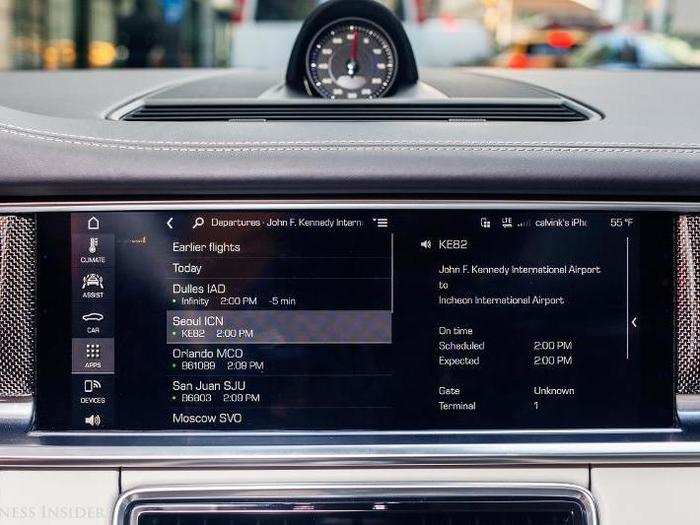
... Detailed information on local events to...
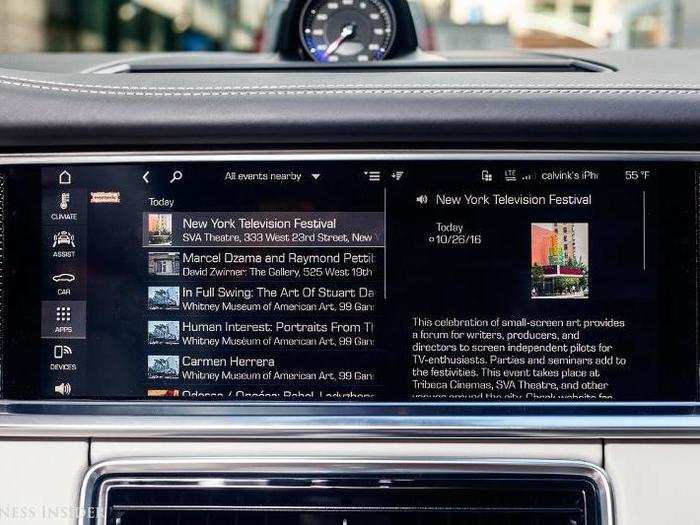
The PCM delivers everything from full weather reports to...
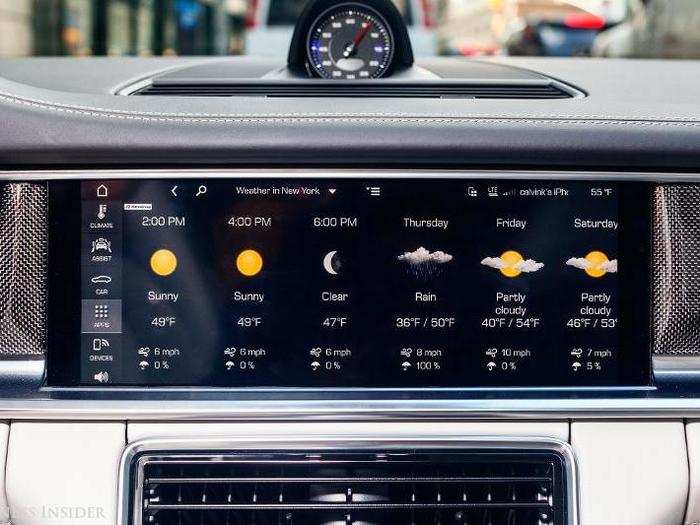
It features full Apple CarPlay integration and is equipped with connect app capabilities.
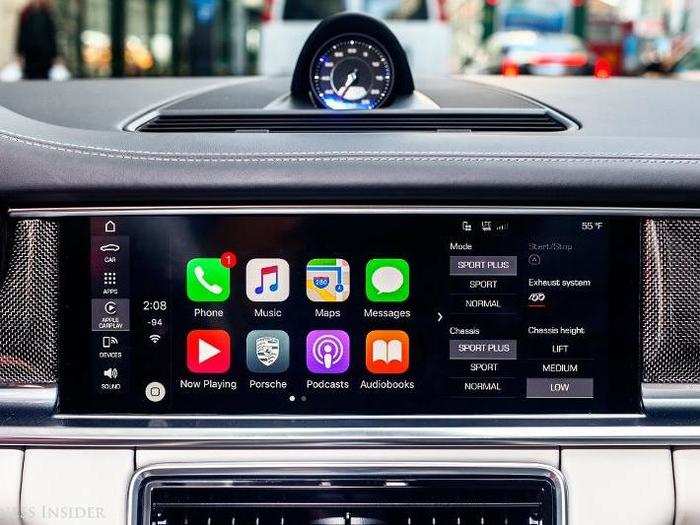
You even control the car's air vent via the touchscreen.
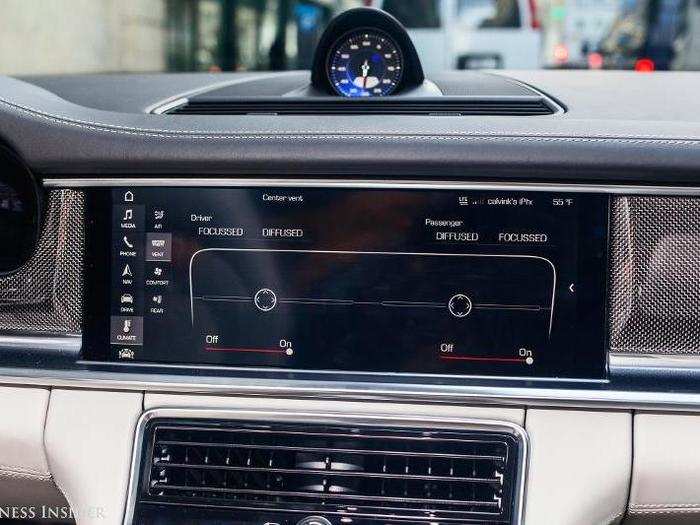
... Its climate control at your finger tips.
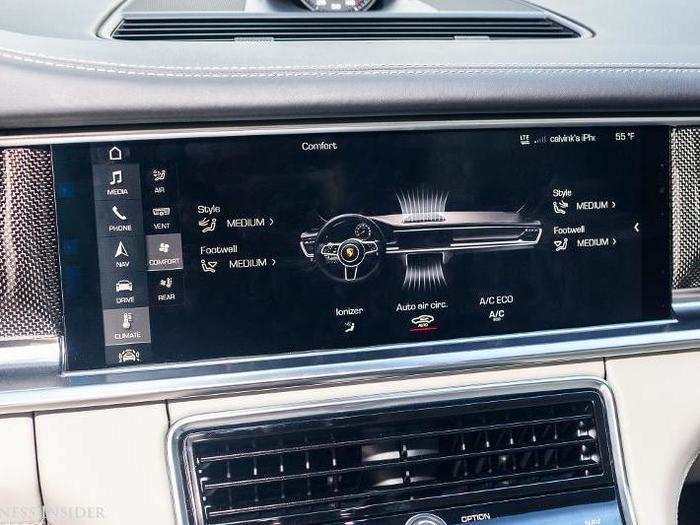
In fact, PCM is really the nerve center for the entire car with controls for everything from the Panamera's active aerodynamics to...
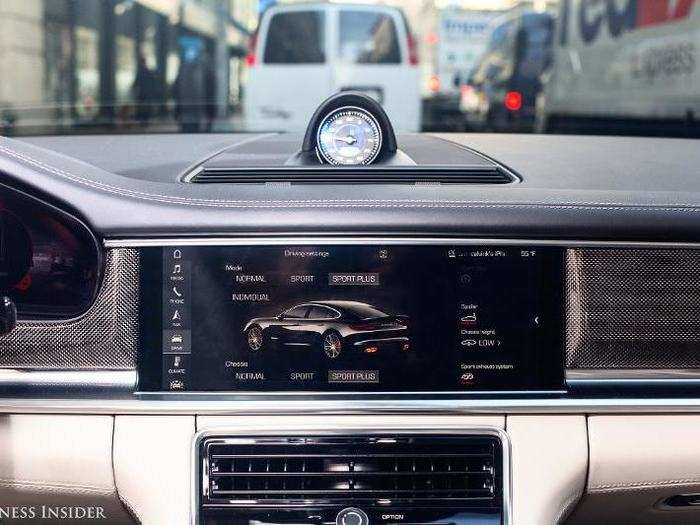
The PCM system is a major leap forward for the German sportscar maker. It marks a major improvement in terms of capability and usability over the company's previous infotainment system.
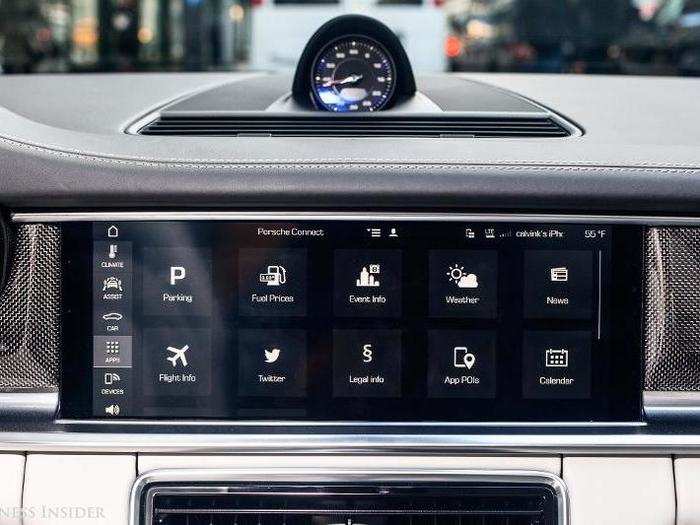
The center stack is dominated by a massive 12.3-inch high-definition touchscreen. It's running the latest version of the company's Porsche Communications Management infotainment system.
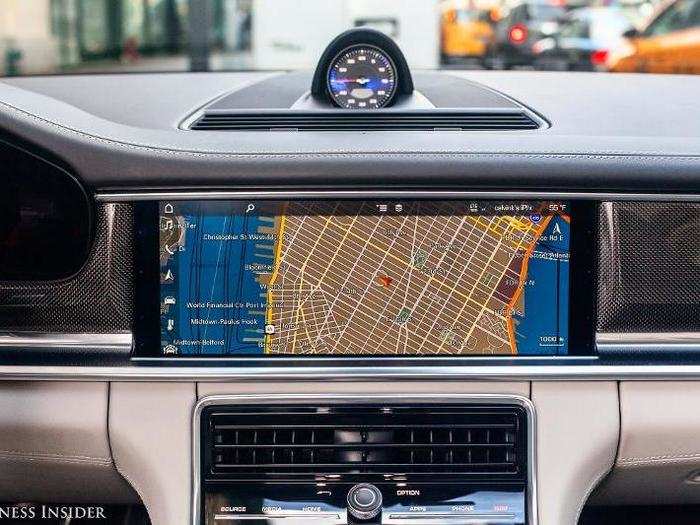
The Panamera also features Porsche's new LED Matrix headlights.
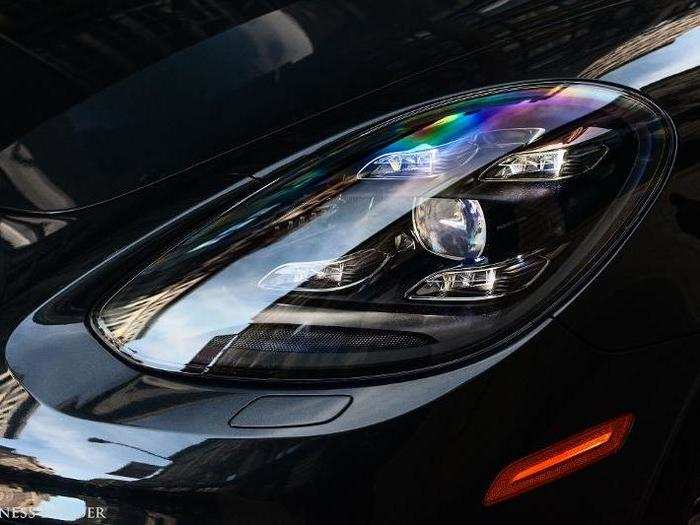
In addition, the Panamera is loaded with a host of driver's assistance including adaptive cruise control, traction management systems, adjustable driving modes, active aerodynamics, lane change assist, and even night vision.
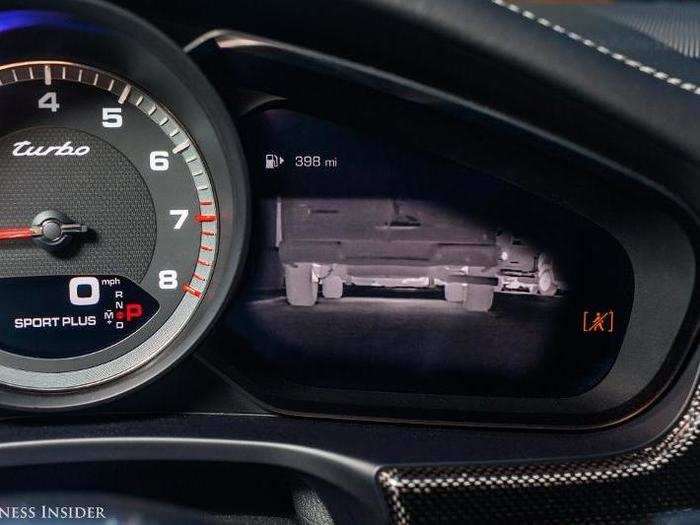
In front of the driver is Porsche's signature center analog tachometer flanked by a pair of seven-inch digital displays.
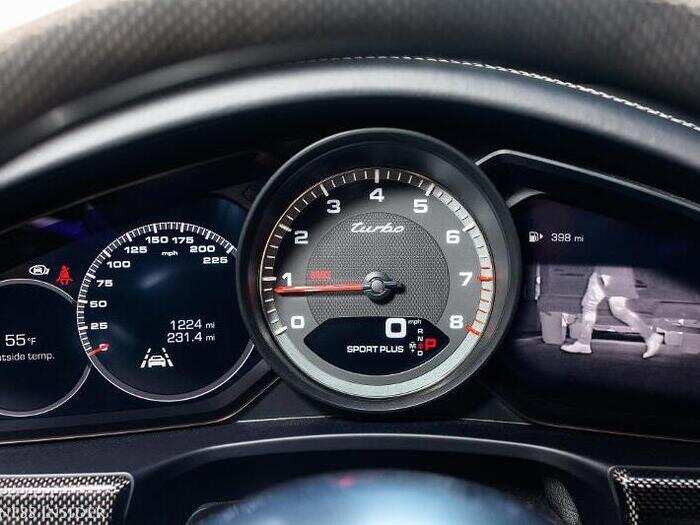
The Panamera's cabin is large and roomy, something to be expected of 16 and a half foot long, 4,400-pound luxury sedan. The interior is covered in fine leather while the metal and carbon fiber accents give a premium luxury feel without compromising its sporting DNA.

Step inside its cabin and be prepared to be wowed. The Panamera marks the debut of the all-new Porsche Advanced Cockpit which replaces traditional buttons and knobs with touchscreen and touch-sensitive surfaces.
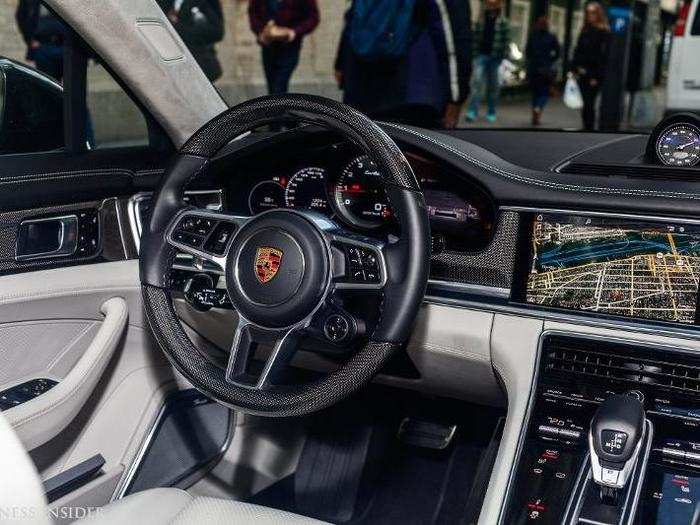
According to Porsche, our Panamera Turbo can hit 60 mph in just 3.4 seconds and reach a top speed of 190 mph. While we didn't do any meter performance testing, those number sound on point.
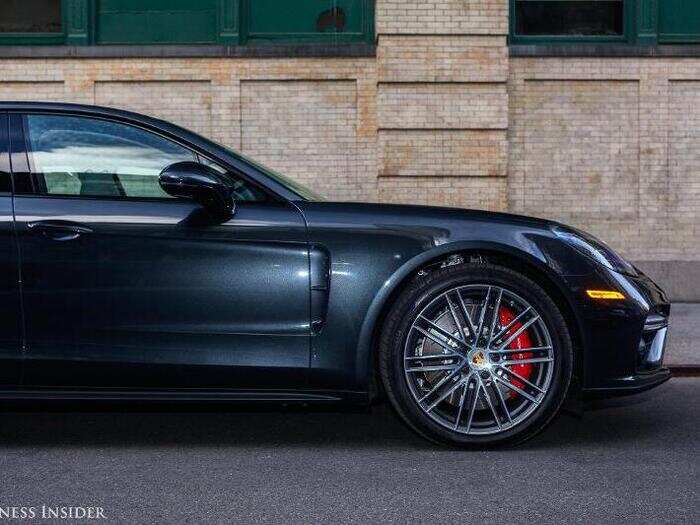
All Panamera's come standard with a new 8-speed twin-clutch PDK transmission while all but the base Panameras come with all-wheel-drive.
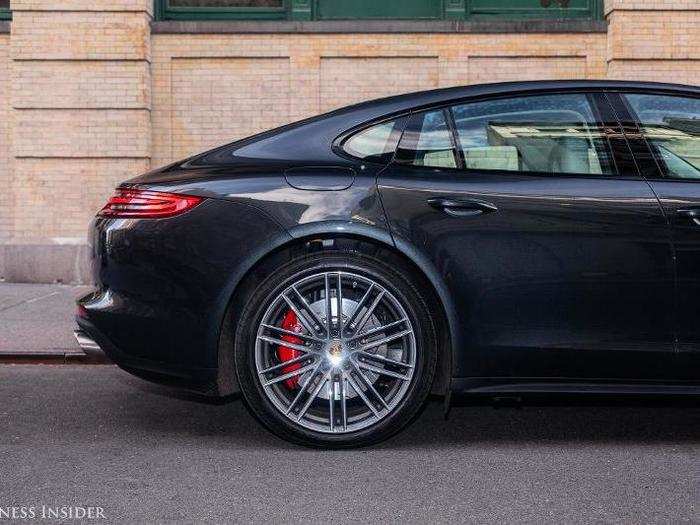
The Panamera is also available with a choice of two V6 engines, at 303 horsepower and 440 horsepower. There are also two performance hybrid powertrains to choose from, one with 462 horsepower and another with 680 ponies.
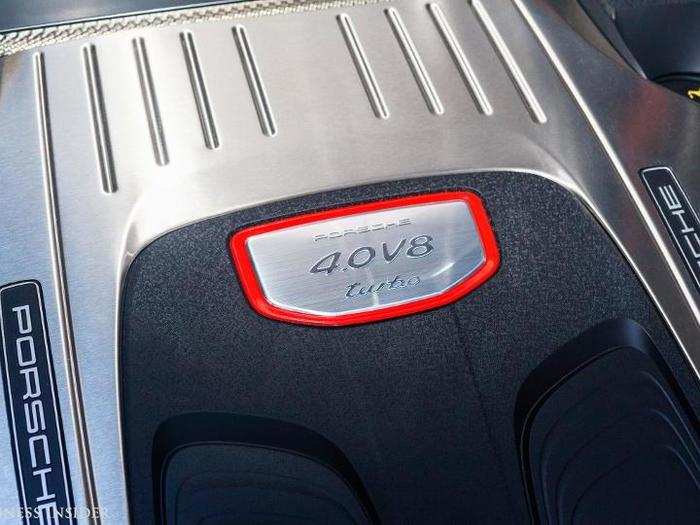
Our Turbo test car came with 550 horsepower, twin-turbocharged V8 engine.
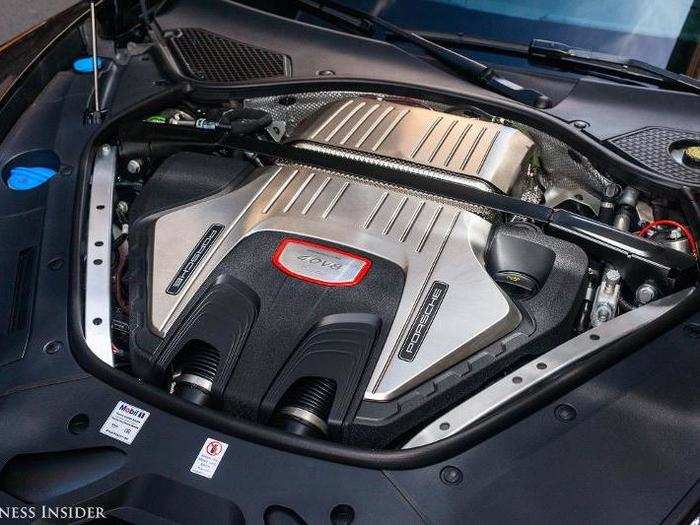
Under the hood, the Panamera Turbo packs a serious punch.
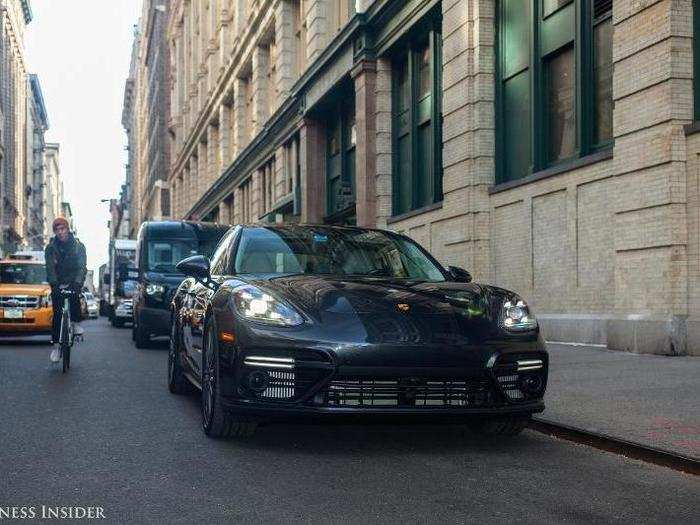
...Its corporate cousin, the Bentley Flying Spur.
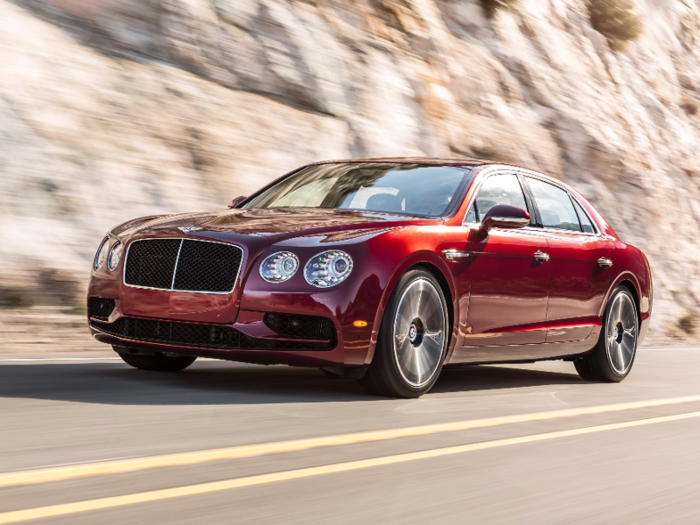
...Maserati Quattroporte, and...
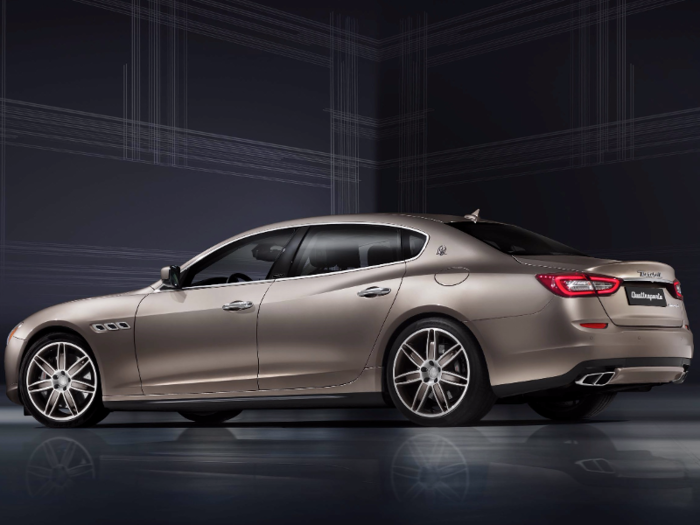
In the marketplace, the Panamera competes directly with other ultra-premium performance sedans like the Aston Martin Rapide S,...
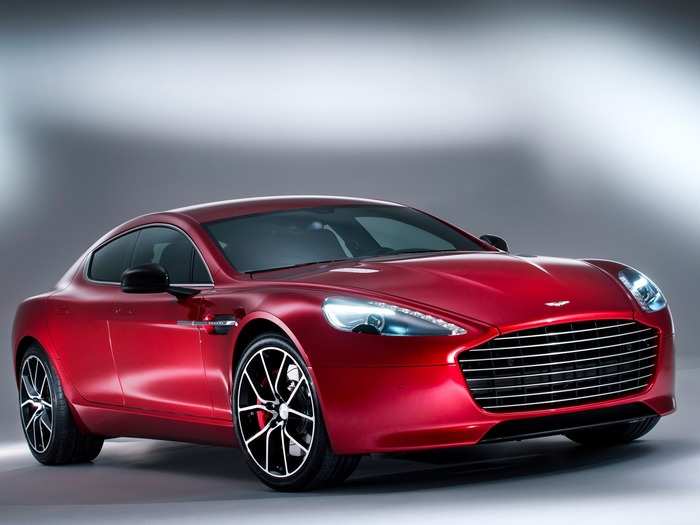
The 989's DNA is strong.
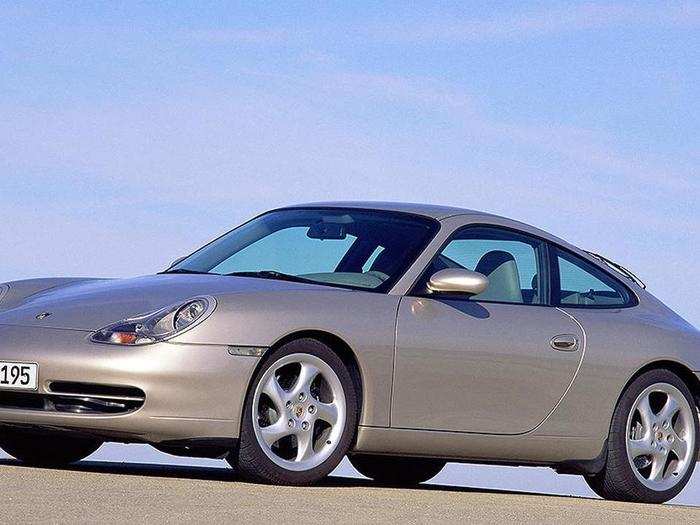
The car was scheduled to enter production by 1995 but never made it. During the early 90s, Porsche had fallen on hard times and was on the brink financial ruin. As a result, the 989 was axed. Instead, Porsche turned its attention to the Boxster and the 996— the first water-cooled version of its iconic 911 sports car. Not all was lost. As you can see, a lot of the 989's DNA made it into the 996.
But first some, history.
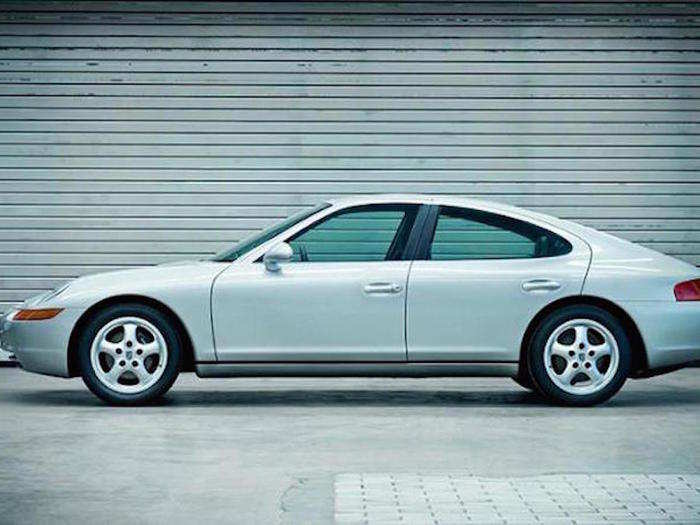
Although the Panamera was the first Porsche sedan to make it into production when it arrived in showrooms for the 2010 model year, the company had actually been mulling over the idea for some time. More than two decades ago, Porsche built the 989 prototype to be a sports car for the whole family. The 989 was powered by a 4.2-liter, 350-horsepower V8 engine, and Porsche claimed it could hit a top speed of 173 mph.
In addition, the rear fascia was redesigned to mimic that of the company's current generation sports cars.
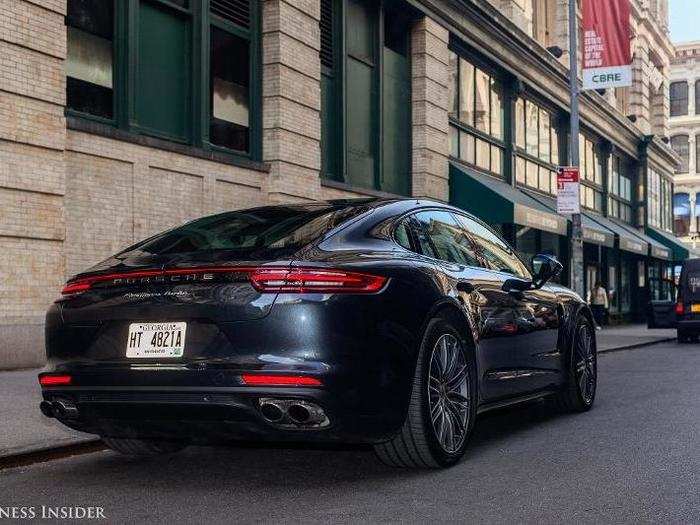
Smooth and sleek.
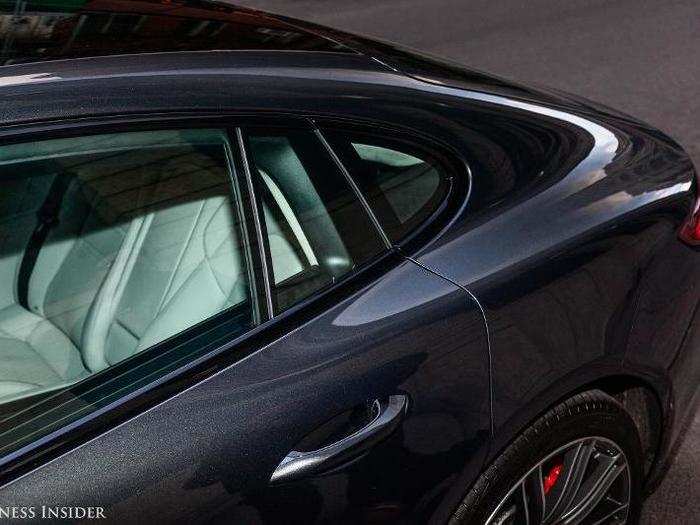
Yes, they have. Porsche increased the rake of the rear windshield, creating a smoother coupe look.
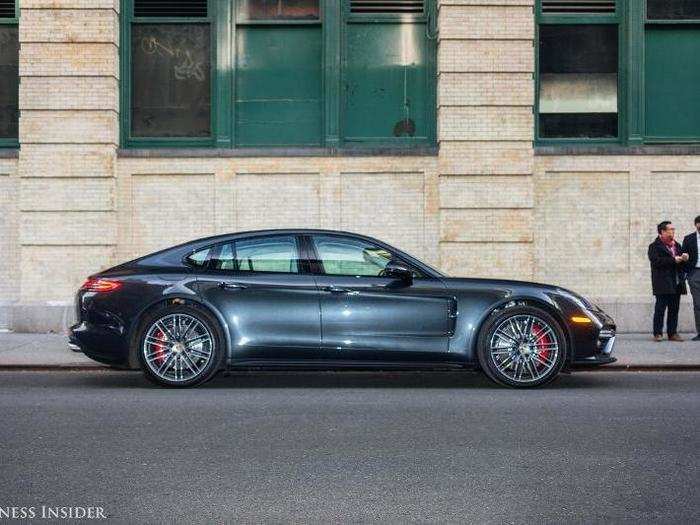
And have they changed that controversial rear end?
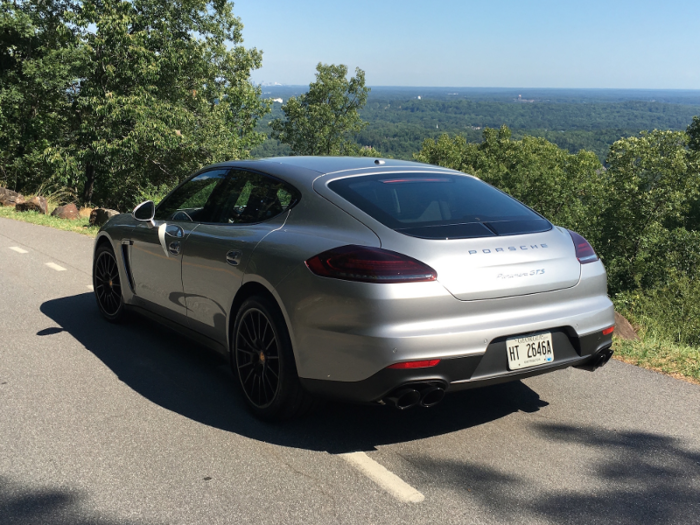
See the resemblance!
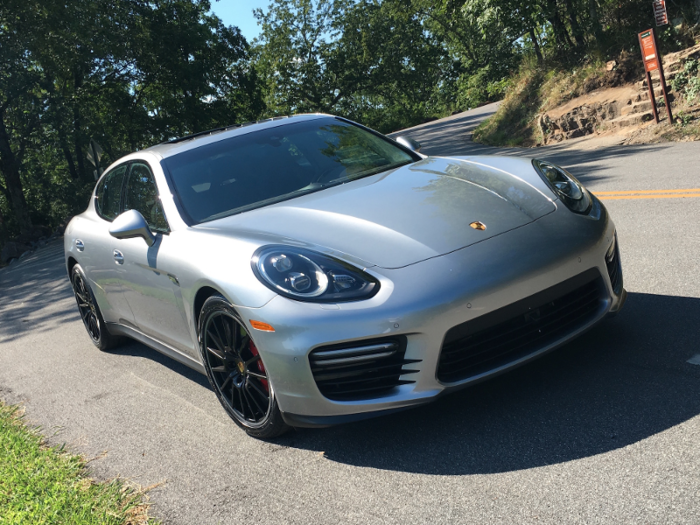
Here it is! The new Porsche Panamera! Even though it's built on VW Group's new Porsche-developed MSB platform, you won't mistake for anything other than a Panamera.
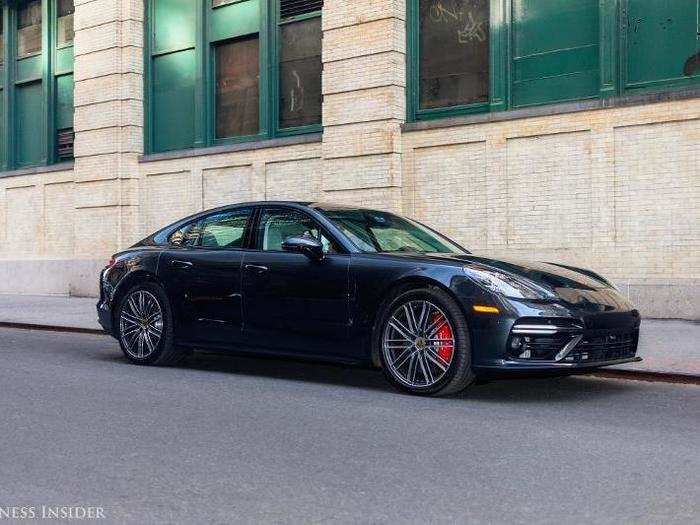
Popular Right Now
Popular Keywords
Advertisement